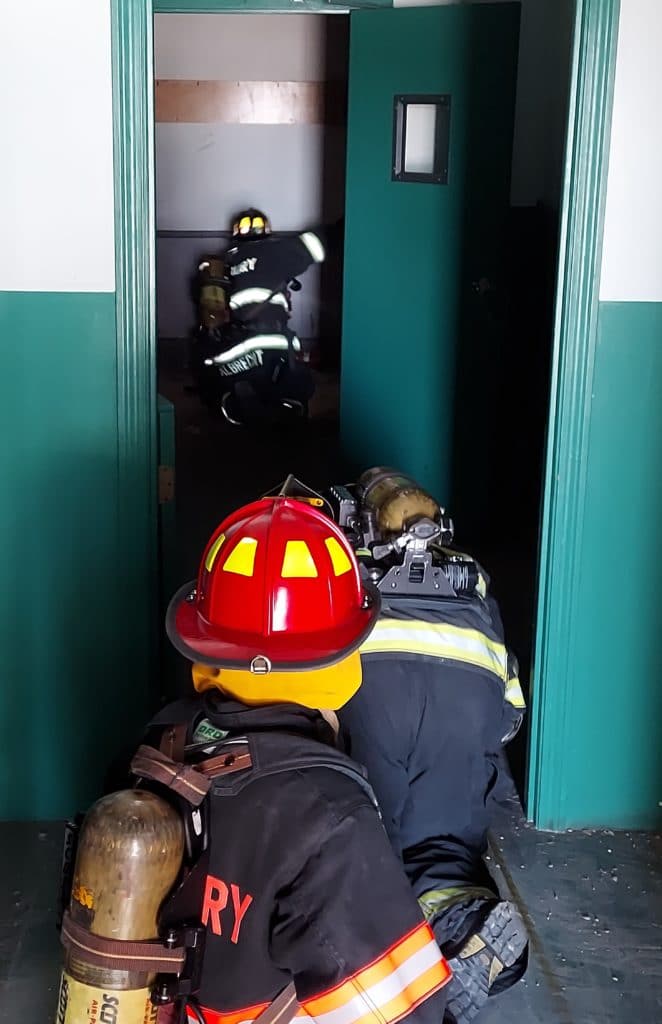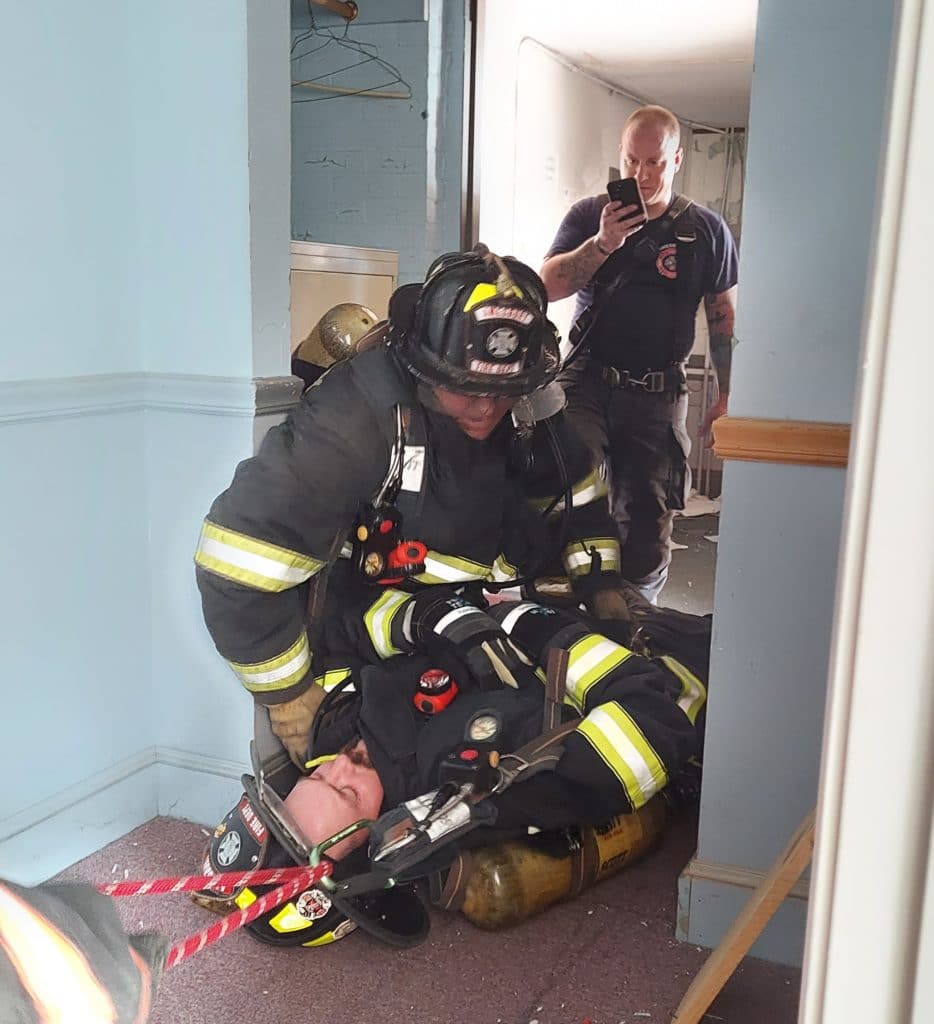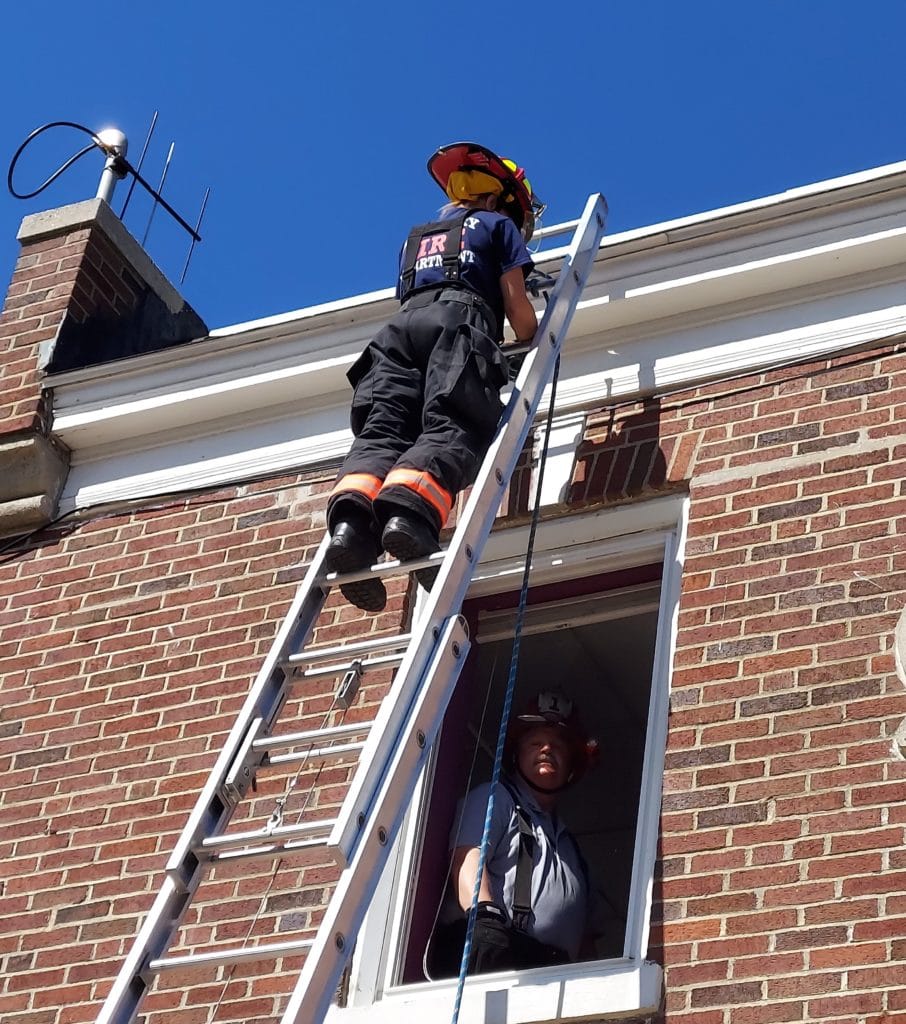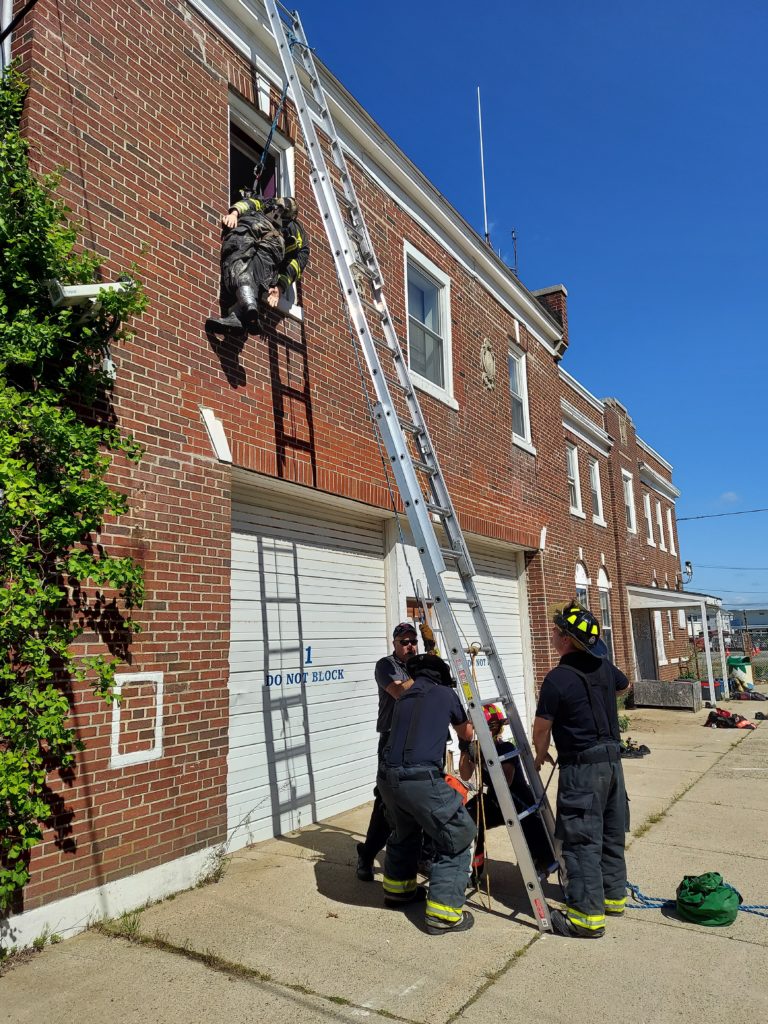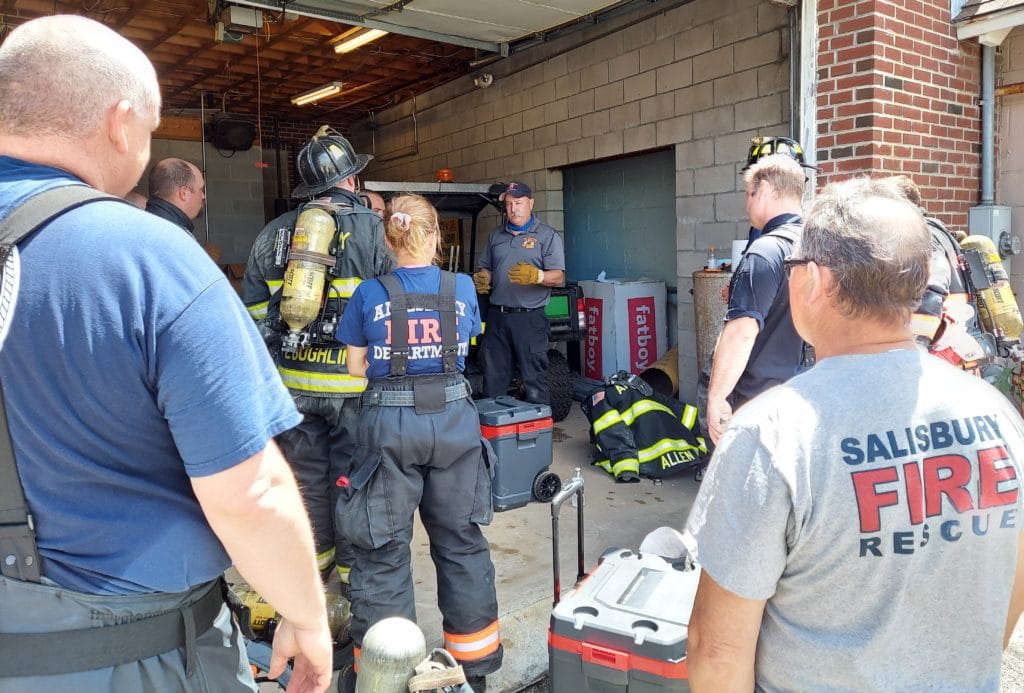SALISBURY – Chief Scott Carrigan reports that about a dozen firefighters from the Salisbury and Amesbury Fire DepartmenFor immediate release
SALISBURY – Chief Scott Carrigan reports that about a dozen firefighters from the Salisbury and Amesbury Fire Departments successfully completed a two-day Rapid Intervention Training class this week.
Rapid intervention readiness focuses on best practices and techniques in assisting a firefighter who is injured, incapacitated, or disoriented, stressing effective teamwork and multi-jurisdictional communication.
The two-day training took place on Wednesday, May 26, and Thursday, May 27, at the former Salisbury Police Station at the beach.
“We want to make sure firefighters have the skill sets they need to perform these functions at any fire,” Chief Carrigan said. “These are skills that they can take back to their stations and practice.”
Firefighters received instruction from staff of PL Vulcan Fire Training Concepts, whose trainers are current and retired firefighters. The training is funded by a $300,000 grant from the Federal Emergency Management Agency.
About 48 firefighters have received this training in the past four weeks. Previous training sessions also included firefighters from the Merrimac, Newbury, and Rowley Departments.
Firefighters trained on installing a “high anchor,” which allows rescuers to pull and lift an injured firefighter up and over the sill of a high window.
In one session, firefighters practiced teamwork while dragging a colleague in distress down the hallway. They also practiced lowering a dummy out of a second-story window, learning proper technique and positioning.
In another breakout group, firefighters learned how they can safely and efficiently drag an injured firefighter using a Stokes basket, either alone or in two-person teams.
Groups trained in a real-life scenario, that of a firefighter having fallen down a flight of stairs. Teams crawled through the darkened station, with waxed paper inserted in the self-contained breathing apparatus to simulate smoky conditions. Continuously communicating, the teams had to develop plans to assist the fallen firefighter and bring them to safety.
“Our hope is that we expand their knowledge base, so they may be proactive at a fire scene rather than reactive,” Chief Carrigan said.



